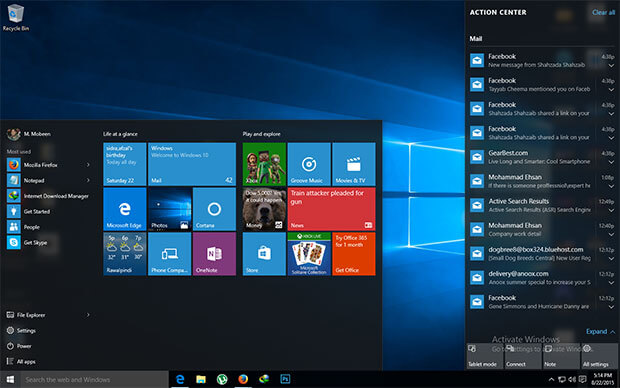How
to fix 100% disk usage in Windows 10
There are several things that could cause 100% disk usage in Windows, and it can be a tricky problem to address. However, help is available: here are all the most popular reasons why it happens and how you can repair it.
When a process or a combination of procedures, demand a lot of your pc's hard disk everything can slow to a crawl. It's most likely the unresponsiveness that has led you to test Task Manager where you have discovered your disk is maxed out.

Finding the challenge is just the beginning though: you still have to fix what's causing it to get back to normal.
Restart your computer
The first thing to try - as with most Windows problems - would be to flip it off and on again. It seems too easy, but it can often fix problems which you may otherwise spend quite a while investigating.
You can not use the Shut Down option in the Start menu however. With Windows 10 this doesn't really do what it says and actually saves the system state so it can start up quicker. So difficulties do not go away.
After that, if the problem persists, then leave your computer alone for an hour or so to do anything it needs to. It may be that the weekly virus scan or a scheduled backup is occurring.
These shouldn't cause such a problem, but if you have an older computer with a relatively slow hard disk, it may be more noticeable. In this case, it can be worth updating your old disc to a far quicker SSD.
Before you do, run a scan for viruses using all those software you have installed: malware might well be the issue.
Task Manager
Click the 'More information' arrow if Task Manager is not showing the complete interface, then click on the Disk column header to rearrange the listing so that it's arranged by Disk Usage with the maximum at the top.
This may be all you need to recognize the offender, but more often than not it will be a Windows service rather than a program causing the issue.
Storage driver
And in the event that you can't see any process by means of a lot of disk funds, it could be that your computer is using the wrong storage driver. Microsoft is well aware of the problem and it's the 'official' solution to the 100% disk utilisation issue.
In summary, it is a firmware bug in some SSDs that causes Windows to believe it hasn't finished a task and scattering the device .
The fix is to disable 'MSI' mode, but only as long as you're running the inbox AHCI driver. Step-by-step instructions can be found on Microsoft's website.
Update Windows
Similar to restarting your PC, you'd be amazed how frequently updating everything fixes issues. We mended at least one using Windows 10 serial key laptops using 100% disk utilization by installing the most recent updates. You may observe a 'Check now' button 'Install now' if upgrades are already downloaded.
Disable Windows Features
Uncommonly, a Windows feature is going to be the origin of the issue. Some people have discovered that Search causes high disk usage and disabling the attribute fixes it. Others state that disabling Superfetch, BITS, the Print Spooler or even sound effects can cure it.
But, though you can return this route, it isn't one we recommend. Turning off features such as the Print Spooler means you won't be able to print until you enable it, and none of them should be the fundamental problem: they don't cause 100% disk usage under normal circumstances. Still, If You Would like to temporarily disable a service to Find out if the Issue goes away do this: Press the Windows key and R together. Type services.msc in the box which looks and hit Enter.
Now, the Services window will open. Scroll through the listing and find the one that you want, right-click on it and choose Stop.
Reinstall Windows
If everything else fails, and this is a really intense course of action, it is possible to reinstall Windows. Windows 10 includes a couple of options that make this easy. One is 'Reset this PC' that lets you keep all of your documents and files, but it is also possible to completely wipe your hard drive and start again from scratch.
You are going to require a backup of your belongings before you do this, and it is worth reading our different guide which explains how to reinstall Windows 10.